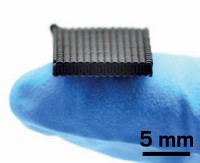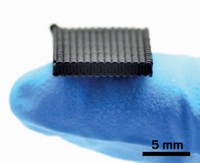Advertisement
Grab your lab coat. Let's get started
Welcome!
Welcome!
Create an account below to get 6 C&EN articles per month, receive newsletters and more - all free.
It seems this is your first time logging in online. Please enter the following information to continue.
As an ACS member you automatically get access to this site. All we need is few more details to create your reading experience.
Not you? Sign in with a different account.
Not you? Sign in with a different account.
ERROR 1
ERROR 1
ERROR 2
ERROR 2
ERROR 2
ERROR 2
ERROR 2
Password and Confirm password must match.
If you have an ACS member number, please enter it here so we can link this account to your membership. (optional)
ERROR 2
ACS values your privacy. By submitting your information, you are gaining access to C&EN and subscribing to our weekly newsletter. We use the information you provide to make your reading experience better, and we will never sell your data to third party members.
Energy
Turning Packing Peanuts Into Battery Electrodes
ACS Meeting News: Chemical engineers carbonize polymer packaging to make lithium battery electrodes
by Michael Torrice
March 30, 2015
| A version of this story appeared in
Volume 93, Issue 13
Chemical engineers have carbonized packing peanuts and used the resulting carbon microsheets to construct lithium battery anodes that rival the performance of conventional graphite ones. If commercialized, the method would help find a use for the packaging, which often ends up in landfills. Lithium-ion battery anodes are usually made from graphite, which absorbs and releases lithium ions during charging and discharging. To make the new anodes, Vilas G. Pol of Purdue University and colleagues first heated polystyrene or starch peanuts from 500 to 900 ºC for a couple of hours under an atmosphere of argon. They also added a metal-salt-based catalyst when carbonizing polystyrene particles. The researchers made anodes from the ground carbonized peanuts and tested their performance in coin-cell batteries. Compared with batteries with a conventional anode, the Purdue team’s batteries charged faster because the microsheets are thinner than graphite. Also, the storage capacity of the peanut anodes was about 13% greater than the theoretical capacity for graphite anodes. This is because the microsheets formed a more disordered, porous network compared with graphite, allowing for greater absorption of lithium ions.




Join the conversation
Contact the reporter
Submit a Letter to the Editor for publication
Engage with us on Twitter